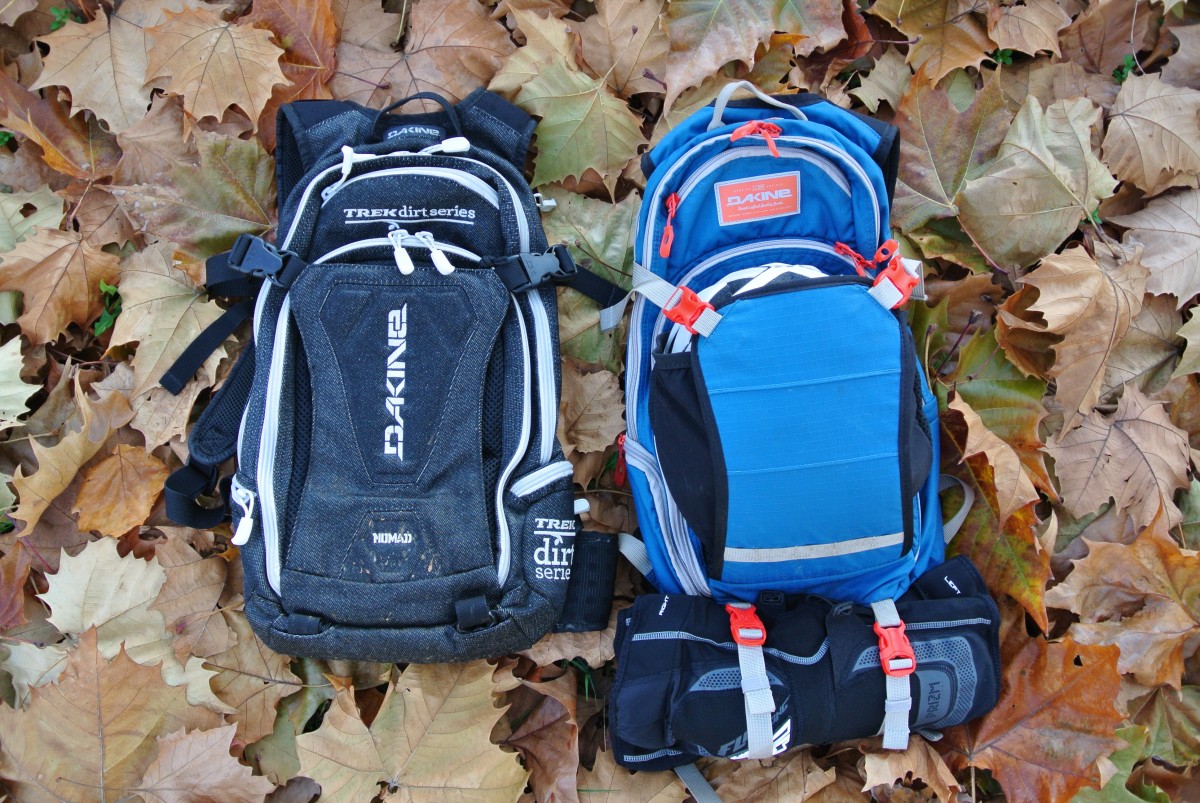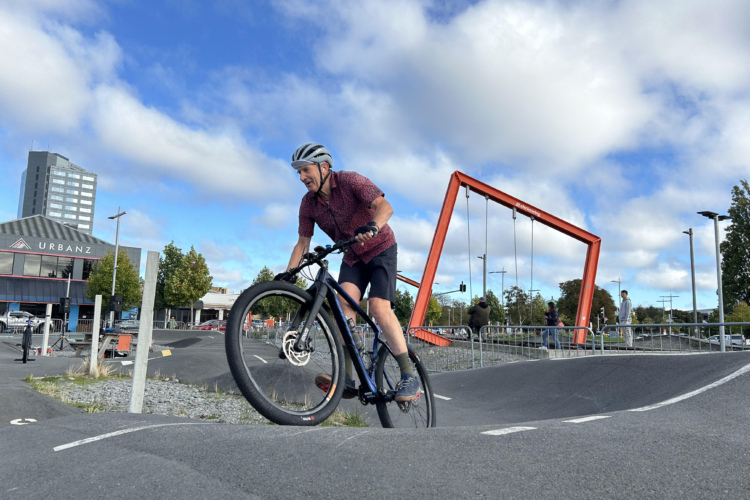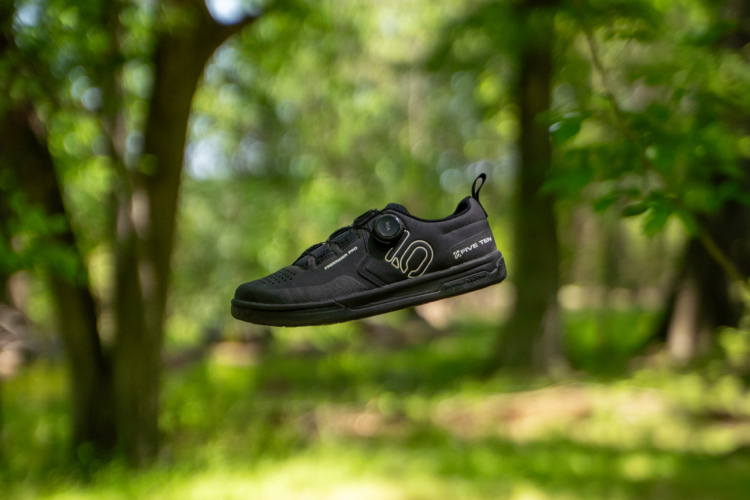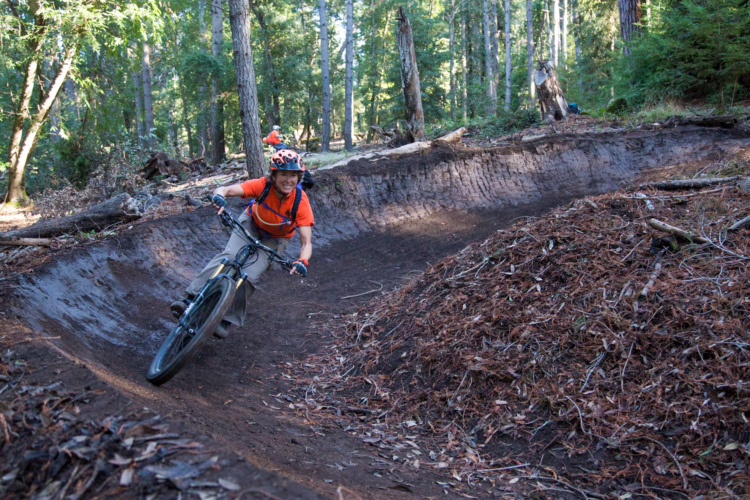
One of my all-time favorite hydration packs is an older Dakine Nomad. It’s a good size for all-day rides, but not huge. The only thing I don’t like about it is the material it’s made from. It appears to be denim, and while that may look cool, it’s just like a pair of jeans: heavy as shit and hot to wear during the summer. Because of that, the pack has largely been relegated to winter duty or shuttle rides.

However, Dakine recently updated the Nomad, with one of the key features being a lighter-weight construction. I’ve been riding with the pack for most of the year, so how’d it compare to the old version?
Design
As I mentioned, the Nomad is a largish pack with 18L of storage. The zippered back panel opens up to accept a 100oz bladder. Dakine uses a Hydrapak reservoir, which I quite like. For easy filling, the hose uses a Plug-N-Play quick disconnect that allows you to remove the bladder from the bag, but leave the hose in place. The top has a unique closure which works kind of like a Ziplock bag. It takes a bit of getting used to, but in my experience once you figure it out, it’s easier to open than Camelbak’s reservoirs. It’s also much easier to clean than others. To keep your hose from slapping you in the face on descents, a magnetic clip on the hose mates with the chest strap.

The rest of the bag is well laid out and actually very similar to the older version. There’s an exterior pocket which can be used for a variety of purposes. You can quickly stuff a jacket, map, or snacks there. It can also be used to carry a helmet–half-shell or full face. A zippered exterior pocket will flip all the way open–great for trailside repairs. It has organization inside for a pump, tools, tubes, food, and any other spare bits you want to take with you. Above that, there’s a fleece-lined pocket to stash your glasses. And of course, the main interior area can be used to stow large items like clothing. In the main area there’s another fleece-lined pocket for your phone, where you can route headphones alongside the hose.

There are two small pockets on either side of the bag near your hips. They’re perfectly sized to hold a 12oz can of beer (or soda) each. Finally, two straps that tuck away neatly into the bottom of the back can be deployed to carry armor.
On the Trail
I’ve owned a broad range of Dakine gear, from snowboarding mitts to jerseys, and I’ve always found it to be high quality. The new Nomad pack is no exception. It’s held up well to a season of use and a few runs through the washing machine. All the seams are still tight and the zippers work just fine.

It has vented straps and a raised back to help keep sweat down, but in practice, I didn’t find them to make much difference… although when you’re riding in 90 degree heat with 90% humidity, you’re going to be sweating your ass off, with or without a pack. Compared to my old pack, the updated Nomad is over half a pound lighter.
- New Nomad: 860g // 1.9lb.
- Old Nomad: 1,150g // 2.5lb.
- *Weights measured without reservoirs
The lighter weight and lighter material does make it more bearable to wear on hot days.
Conclusion
The layout is great, it’s lighter, and the space is well thought out and useful. So everything is gravy, right? Almost. This pack is so close to taking over the top spot for me, except for one crucial problem. The waist strap. On my older Nomad, the waist strap is about two inches wide, on the new one it’s about an inch. If you’re loaded down and headed out for a big ride–which is exactly what this pack was intended for–it’s nowhere near as comfortable as it’s predecessor. Its diminutive strap also makes it feel less secure on the descents. Even cinched as tight as I can get it, it can still move around a bit.

I’m not sure why Dakine made this change. Why would you put such a tiny strap on pack intended to haul a bunch of gear? I could see using it on a lighter-duty pack, but it’s out of place here. Unfortunately, I’ve seen small straps taking over on a lot of other packs too, and not just from Dakine.
So, pack makers, knock it off will ya? Have we learned nothing from the current trend in rims? Wider is better.
MSRP: $135. $105 without reservoir.
Thanks to Dakine for providing the Nomad for review




















0 Comments